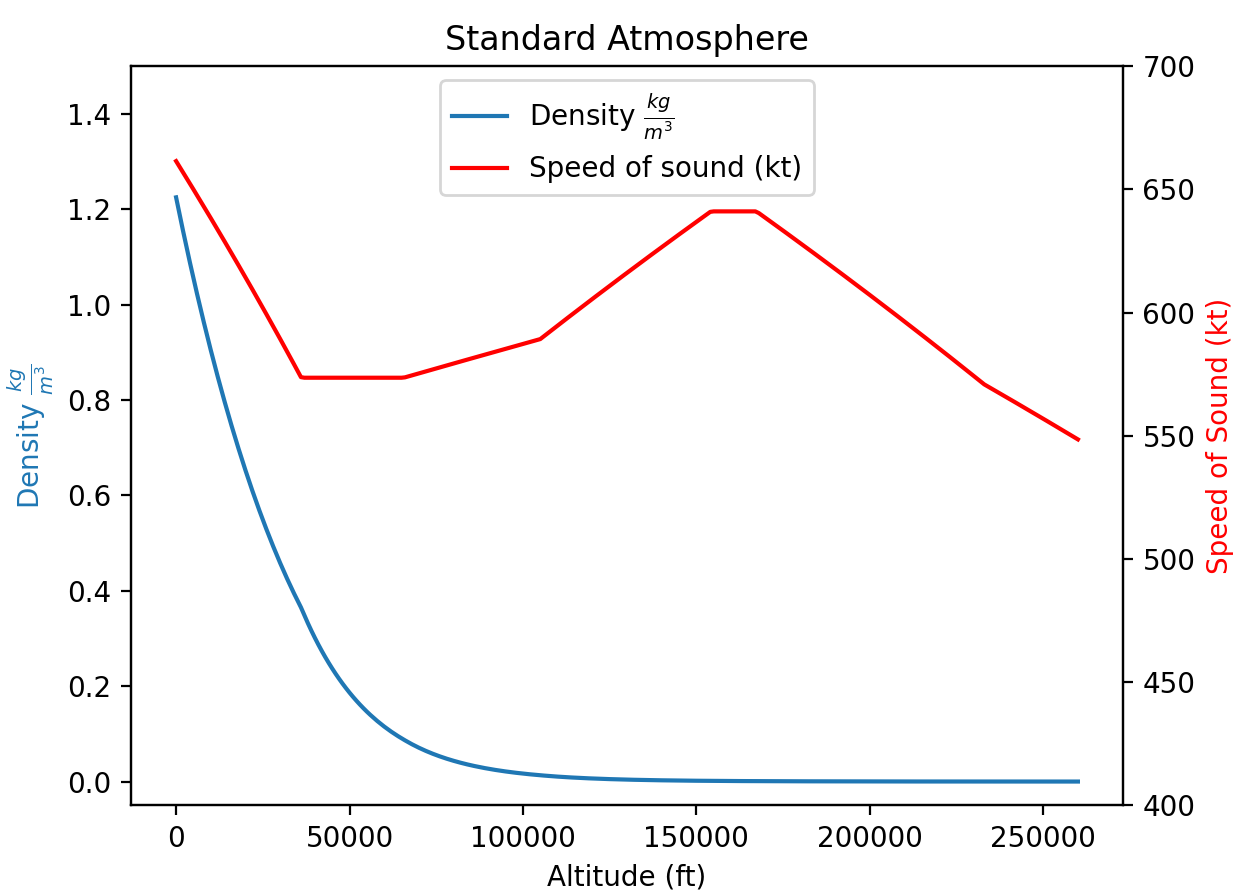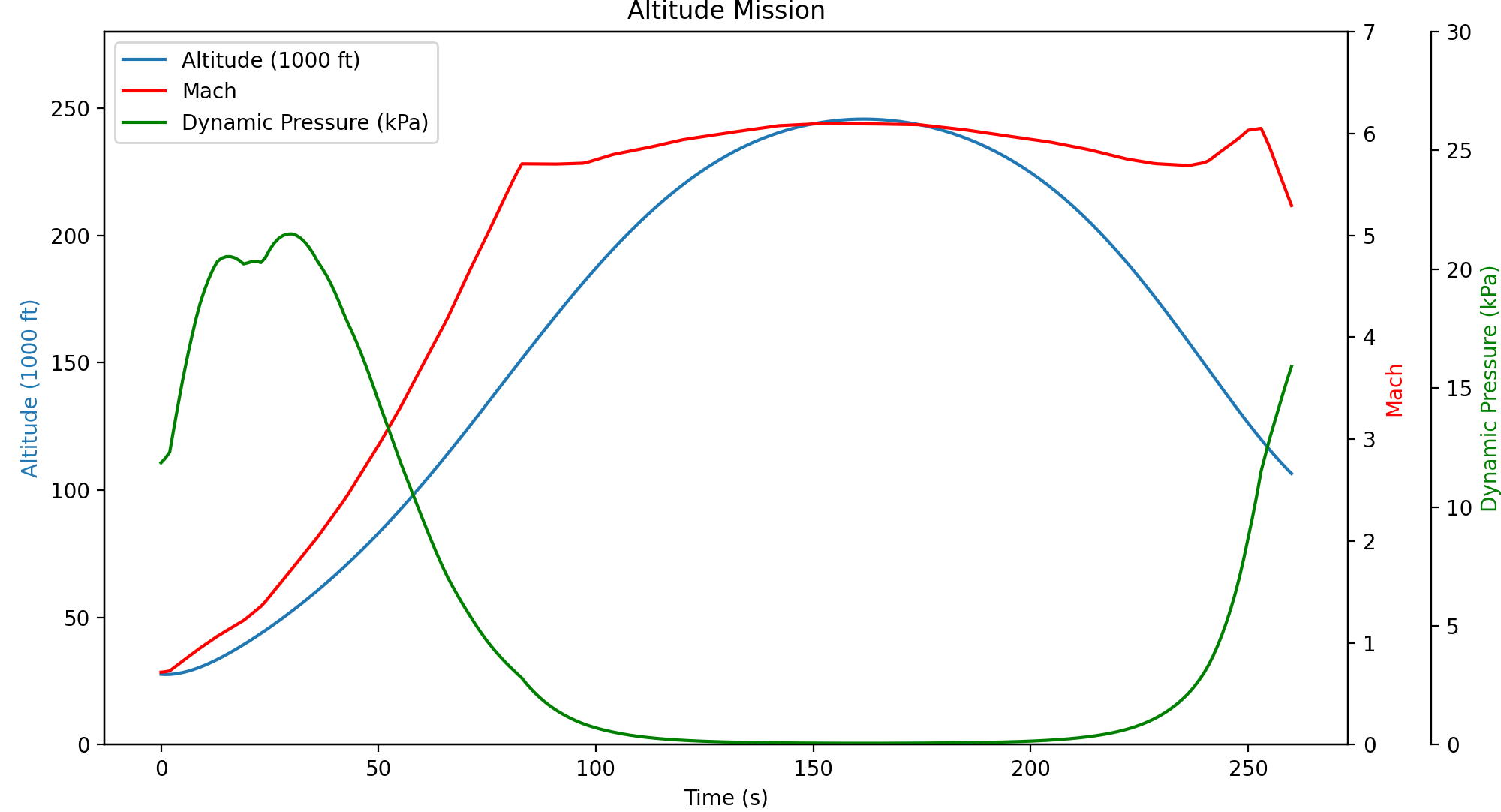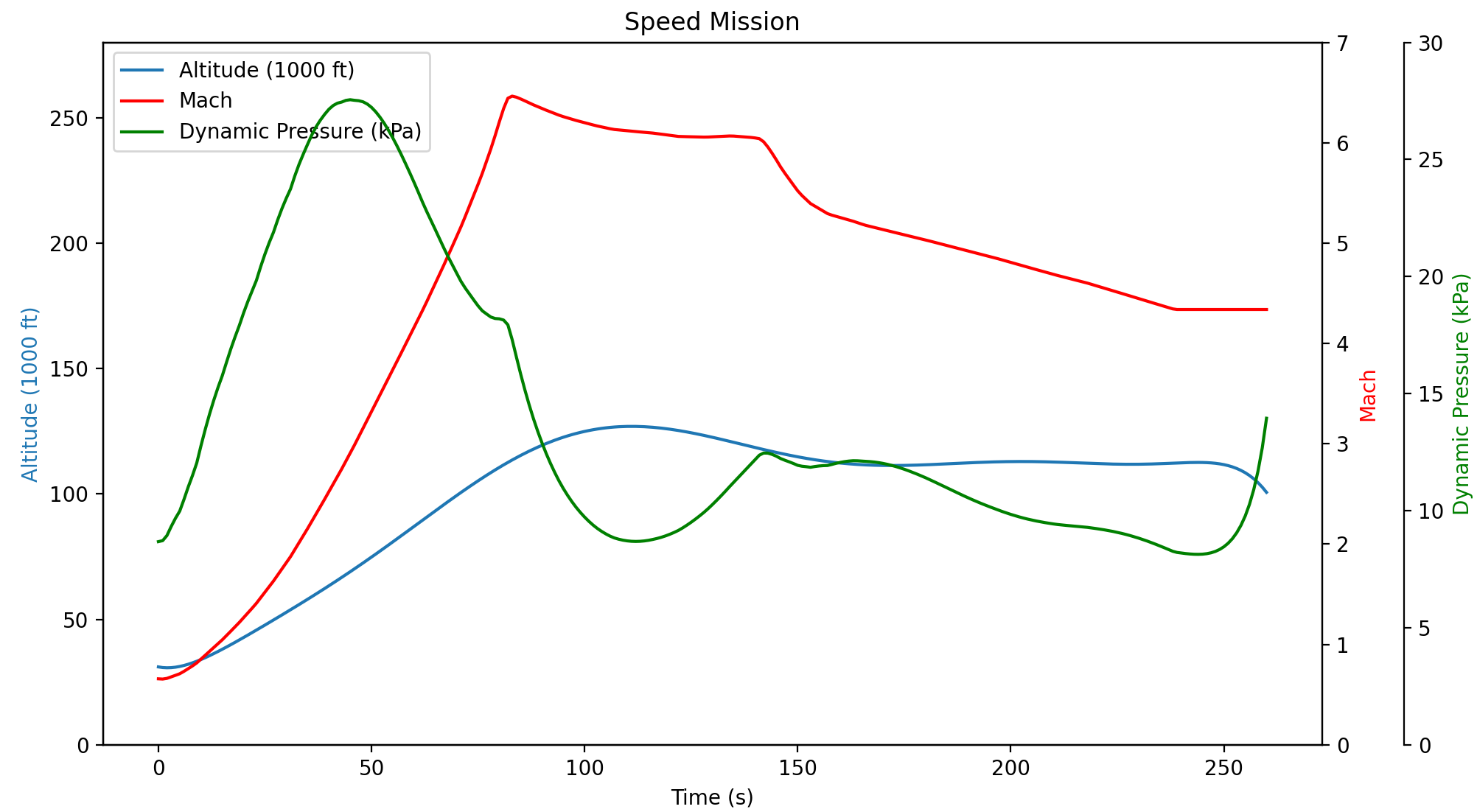X-15 Max Q
I previously wrote about Max Q - Maximum Dynamic Pressure comparing the Max Q experienced by a SpaceX rocket during launch, the Space Shuttle and a typical airliner. Now let’s take a look at the Max Q that was experienced by the X-15 while it went about setting various speed and altitude records during it’s research.
To recap, the dynamic pressure or Q is the product of the air-density and the velocity squared of the object travelling through the air.
$$Dynamic\ Pressure\ (Q) = \frac{1}{2} \rho V^2 $$The SI unit for pressure is the pascal. One pascal is the pressure exerted by a force of magnitude of one newton perpendicularly upon an area of one square meter.
The following graph shows how the density and the speed of sound vary in the standard atmosphere over the altitude range that the X-15 operated in.

X-15 Report
I came across a reference to an X-15 report while watching Ben Dickinson’s YouTube video - X-15 Space Plane - A Review for 6DOF Model Development | Flight Simulation Tutorial - Section 2.1.
The Design and Operation of the X-15 Hypersonic Research Airplane report includes two graphs showing a plot of altitude vs time and Mach vs time for the two types of profiles flown. One profile targetting high altitude and one profile targetting high speed.

Dynamic Pressure Variation
So after digitizing the altitude and Mach data from the two graphs in the X-15 report we can plot how the dynamic pressure varied during the two flight profiles, and also check when Max Q was achieved and how large Max Q was for each of the two profiles.


| Mission | Time | Altitude | Mach | Max-Q | ||||
|---|---|---|---|---|---|---|---|---|
| Altitude | 30s | 52,300ft | 1.72 | 21.5 kPa | ||||
| Speed | 45s | 69,000ft | 2.91 | 27.6 kPa | ||||
| SR-71 | N/A | 80,000ft | 3.5 | 23.7 kPa |
For good measure I’ve added in the SR-71 for comparison. So in all cases the Max-Q is roughly equal to or less than the Max-Q experienced by airliners. So even though the X-15 was hypersonic, exceeding Mach 5, the hypersonic speeds were achieved at such high altitude where the air density is so low that it doesn’t result in significant dynamic pressure.